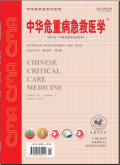10.3760/cma.j.issn.2095-4352.2013.01.003
生物医学研究中应用自发性疾病动物模型能否使基础研究更加贴近临床实践?
The bench-to-bedside gap in many areas of biomedicine continues to be of great concern.Promising basic research findings often fail to succeed in clinical trials ”1-5”.One reason may be the difficulties of implementing clinical research that is powered enough to detect a treatment effect,especially in complex disease processes such as severe sepsis where patient heterogeneity is tremendous ”6”.Another is that animal disease models developed to mimic a certain characteristic of the target disease often lack key features of their real life human entity”7”.Sophisticated animal models closely resembling the relevant human pathophysiologic aspects are necessary to test a specific therapeutic target prior to clinical testing”8-11”.Vivid interplay between basic and clinical scientist is essential to achieve this”12”.在诸多生物医学研究领域,实验室与临床之间的差异受到极大的关注.一些”看上去很美”的基础研究结果在应用于临床研究时却完全不是那么回事儿”1-5”.其中原因之一是多种复杂疾病,如脓毒症,其临床表现千变万化,病程衍变多样,即使经过精心设计的临床研究也很难准确验证某项新治疗的疗效”6”.另外一个原因是,大多数动物疾病模型着重模仿目标疾病的某一个特性,却常常缺少人类发病时作为一个完整生命体所体现出来的关键疾病特征”7”.因此,在一项新的治疗手段开始实施临床研究前,需要精心设计一些与人类相关疾病病理生理过程贴近的动物模型,以验证其疗效”8-11”.毋容置疑,基础和临床研究科研人员之间的充分互动是实现这一目标的前提”12”.
25
2013-04-26(万方平台首次上网日期,不代表论文的发表时间)
共3页
5-7






